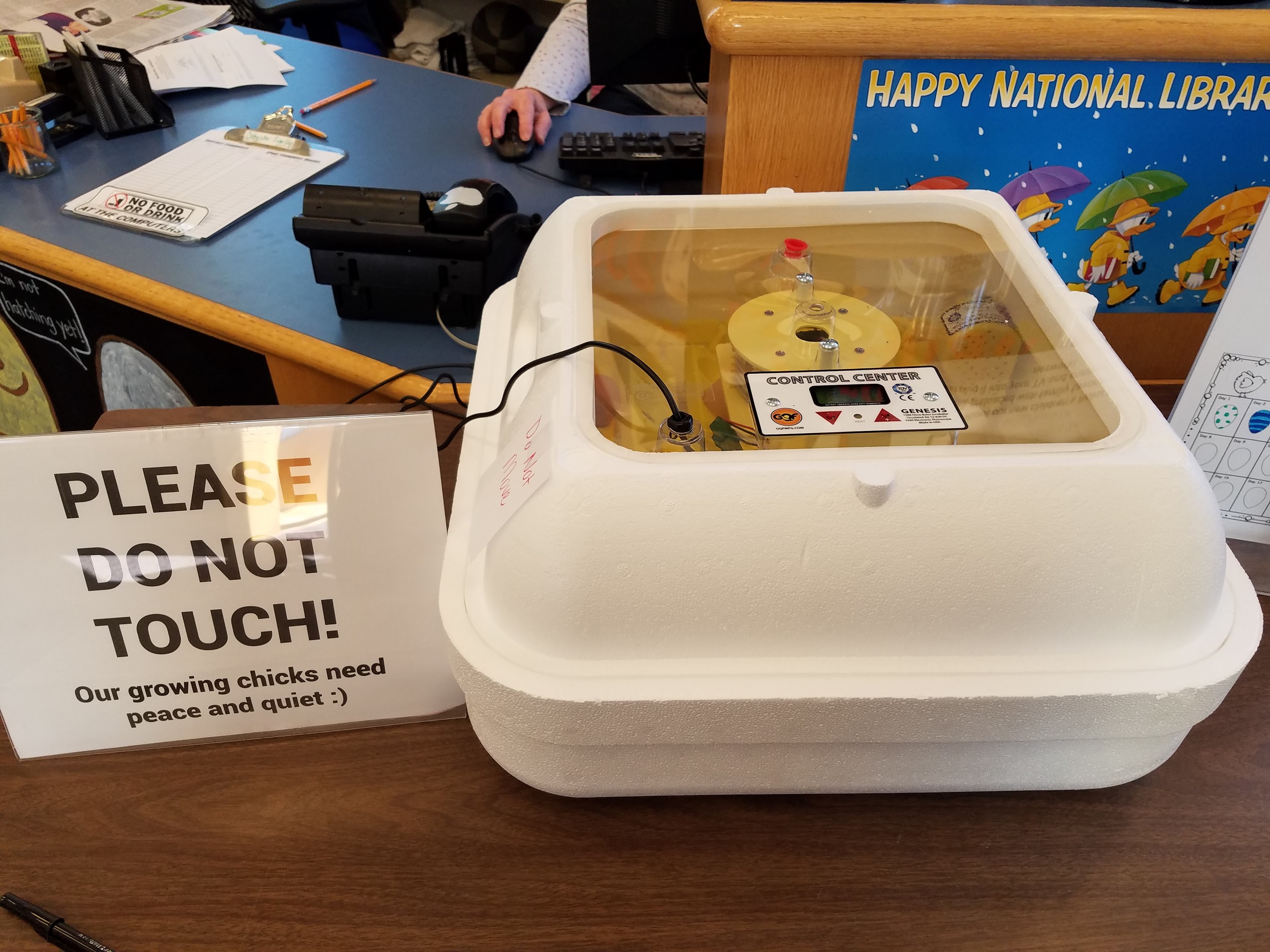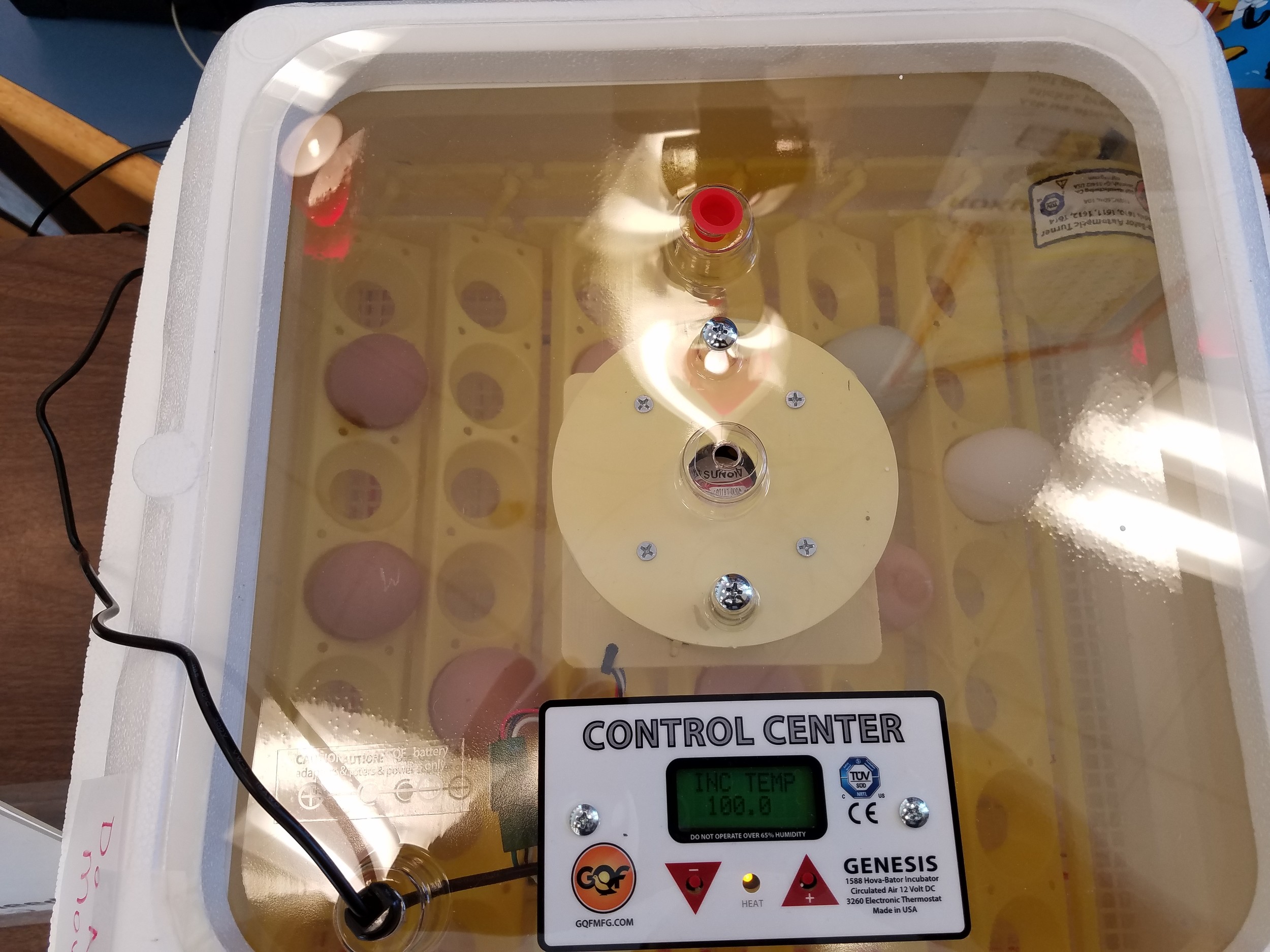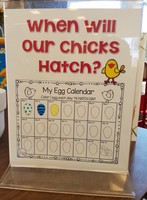RVC library participates in chick-hatching program
The Rockville Centre Public Library will welcome 12 furry friends into the world at the end of the month and residents can watch it all unfold in the comfort of their homes.
The library is among 10 in Nassau County that is participating in the Nassau Library System’s first chick-hatching program. The 12 eggs arrived on April 11 with almost three weeks left of incubation and are expected to hatch around May 1.
“We were really eager to do it,” said Terry Ain, the head of youth services at the library. “It’s very exciting. The kids are very excited.”
There are white, brown and green eggs in the incubator. According to the Cornell University Cooperative Extension of Suffolk County, the white eggs are from a White Leghorn mix breed and will hatch yellow chicks, and the brown ones are either Black Star chicks, which are a cross between a Rhode Island Red rooster and a Barred Rock hen, or a Cinnamon Queen, which is a mix of the Rhode Island rooster and the Silver-Laced Wyandotte hen. The green eggs are Cream Legbar chicks, which will hatch in various shades of brown.
There is no way to determine the sex of the chicks until they are hatched.
The climate-controlled incubator that is housing the eggs is situated near the rear of the Children’s Room, in front of the information desk. The box must always be set near 100 degrees Fahrenheit and between 45 and 55 percent humidity through the first 18 days of the period. The humidity will increase to between 65 and 70 percent in the days leading up to the hatchings. Water is added to a pan inside the incubator occasionally to keep the humidity up.
The boxes must also be ventilated. According to the Modern Farmer website, egg shells are porous, thus allowing oxygen to enter and carbon dioxide to exit. Incubators need to have holes or vents that allow fresh air to circulate so the fetuses can breathe.
The eggs are spaced apart in the incubator and are sitting upright in crate holes. Sometime during the final week of incubation, the crates will be removed to allow the eggs to roll as the fetus becomes more active.
Library technicians have already set up a webcam above the incubator and will begin live streaming the eggs on its website around the last week in April. Ain said the chicks will remain in the library for about a week after being born before being shipped to the Cornell Cooperative Extension farm in Yaphank.
Children can learn more about the hatching process through several books displayed throughout the room and a stool was set up to help them look inside the incubator. Ain also welcomes the idea of the youngsters naming the chicks after they are born.
The chicks could survive for about 24 hours on their own if they are born during closing hours.
Librarians Jen Marino and Elizabeth Vorbach attended the training session at the Nassau Library System in Uniondale last month.
“I can’t wait,” said Vorbach. “You feel like it’s your responsibility. We’re hoping everything is fine. It’s a waiting game now. It’s very exciting.”











